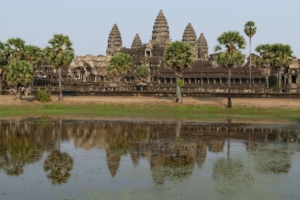Lasers are helping uncover centuries-old “lost cities” in Cambodian jungles near Angkor Wat.
The area, a UNESCO World Heritage site and ancient wonder of the world, has been a region of study for archaeologists for years.
As it turns out, the cities and temples buried under the jungle are larger and more widespread than previously imagined. Using technology known as LiDAR, which stands for Light Detection and Ranging, it’s similar to radar in its ability to survey areas. The key difference, however, is in the use of laser light, rather than radio waves, to perform scans of the land. The LiDAR device is mounted to a helicopter and is used to create detailed map scans for later study.

Uncovering What Lies Beneath
For years, researchers speculated about what lies beneath the dense jungle vegetation. The utilization of LiDAR was able to validate those ideas, revealing some structures for the very first time. The city dates back to the early to mid 1100s, under the rule of King Suryavarman II, during the Khmer Empire’s rule.
Considered one of the largest pre-industrial cities, initial scans in 2012 revealed the existence of temple city Mahendraparvata, near Angkor Wat. In 2015, a more in-depth scan confirmed the existence of additional, undiscovered structures, including the presence of both Hindu and Buddist iconography.
The new scans also revealed a city complex around Preah Khan of Kompong Svay temple, sites for iron mining, as well as a complex waterway system. With the new information, future archeological digs will be simplified. Maps with even higher detail are in the works.
The new research findings were presented at the Royal Geographic Society in London, in June.
Thanks for reading! Do you enjoy our Throwback Thursday Laser Posts? Read about the History of Laser Tag here.
Interested in attending one of our upcoming content-packed laser conferences? Click here to learn more about our inaugural Industrial Laser Conference and this year’s ICALEO.





